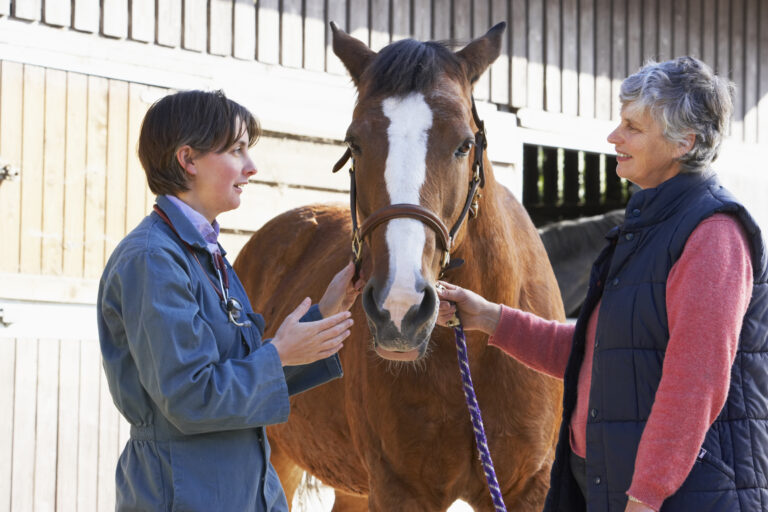
Last year, our veterinary practice decided to review our overall business strategy and determine what we were doing to give us a sustainable competitive advantage in our market. One of the key elements in determining a good strategy is figuring out the vision and mission of the business. I had always been confused about the meanings of each of these. Both words are forward-looking in that they describe something we want or can do as a business. For example, if our vision is to be a high-quality veterinary business, couldn’t that also be our mission?
That confusion was resolved when I found a seminal article on the subject called “Building Your Company Vision” in the Harvard Business Review. Written by Jim Collins and Jerry Porras, the article contained the research Collins used for his book “Built to Last,” which described the common elements of high-performing and long-lasting companies. One of the shared characteristics of these businesses was a clear and inspirational vision framework that was easily understood by all employees, that acted as the guiding light for the company in an uncertain future, and that stated what the company was going to do to achieve that vision. (See Vision and Mission Statement definitions listed below.)
A complete company vision has two main components: core ideology and an envisioned future. The core ideology can be defined as the vision of the company, and includes the overall purpose of the company and the values that support the purpose. The envisioned future is the mission, or the company’s overall description of how it hopes to achieve the vision.
The core ideology is formed by two factors: the business values and purpose. Strong businesses have a strong sense of values and purpose that do not change over time. Strategies and business practices will change in response to changing markets, while the foundation purpose and values remain consistent. Typically, the founders of the business have ingrained personal values and a purpose that the business then follows over time.
Values for a business are the same as for individuals, in that they are enduring in challenging times. Core values are those that would not change even if adhering to them could put the business at a competitive disadvantage. For example, a veterinarian has the opportunity to gain a trainer with a large stable as a new client. The trainer has a reputation for pushing the envelope to get his or her horses to compete. At the same time, the veterinary business has core values based on ethical behavior and putting the long-term health of the horse first. In spite of the potential for increased revenue, the veterinary practice that follows these core values would decline this client. It develops a business that supports its values, rather than shifting its values for business gain.
Core values are not necessarily unique to a business, since many businesses will be ethical, customer service-focused or science-based, for example. What is important is that the core values are followed. Already we are seeing how clearly established core values can guide the vision of the business.
Business Purpose
The other element of the core ideology is the purpose of the business. It is the reason why the company exists; the idealistic motivation, or why the veterinarians and staff do the work they do. Determining this motivation is the most difficult part of creating the vision for a company. It is easy to focus on what we do as veterinarians, but it is much harder to peel back the layers and find out why we do what we do.
Like values, the business purpose is very personal and often reflects the business founders’ reasons for becoming veterinarians. When our business tackled this area, we realized that our business purpose is to give our clients peace of mind in the medical care of their horses. This stemmed from our own frustrations before we were veterinarians, when we often felt uninformed about the health care of our own horses and pets. Either the veterinarians didn’t explain the conditions well, or didn’t appreciate the bond we had with our pets. The fear and apprehension of not making the right decision in pet health care was reason enough for our founding vets to form the business—we didn’t want others to feel like we did.
Like core values, the business purpose does not change over time; it is aspirational and never fulfilled. Imagine a world-class athlete that is at the top of his or her game. The athlete keeps practicing and finding ways to keep improving. Even after winning a championship or a MVP award, you never hear the athlete say that he or she couldn’t do better.
Great athletes and businesses are always striving to improve. Unlike an athlete, a business can keep improving with successive owners. While focusing on the purpose, they will keep changing with the market to fulfill the vision of the company.
Business Mission
The second part of the vision framework is putting into words the envisioned future of the company, or how it is going to get to a point in the future 10-plus years away. This can be considered the mission of the company. It is a combination of a real, implementable goal with aspirations and dreams for the company. Ideally, the envisioned future has two parts, like the core ideology. The first part Collins and Porras call a BHAG, for “Big, Hairy, Audacious Goals.” The second part is a vivid description that outlines how the company will realize the BHAG.
The BHAG is a grand vision statement that unifies and inspires the company in the pursuit of a large, ambitious goal with a set timeline. A great example of a BHAG was the proclamation by President Kennedy that the USA would put a man on the moon within 10 years. It was a huge goal that rallied the general population and the workers of NASA. If someone asked a NASA employee what he or she was working on, the answer was short and to the point. The employees were united and inspired to achieve this huge, yet achievable, goal.
The same can be done for a veterinary business. For example, the goal can be quantitative or qualitative: “We want to become the largest vet practice in our town by 2025,” or “We want to be the go-to veterinary surgeons in our state.”
The goal could also resemble an underdog mentality against an established player, such as “Surpass Acme Vet Practice as the largest in the area.”
You could also compare your business to another well-known business from another industry. For example: “We want to be known as the Apple of the vet business.”
Finally, the goal can refer to internal transformations. For example: “We want to transform from an ambulatory practice to a full-service referral hospital.”
Achieving BHAG
After we have created our huge mission statement that tells the company and the world where we will be in 10-plus years, we now have to describe what this future will look like.
The goal is to transform words into an image that is tangible to people. This statement can be several sentences that explain in a step-by-step manner how the company will achieve the BHAG. Without this description, the employees of the business will be left wondering how the BHAG will be reached and might dismiss the grand mission as unachievable without knowing how they will reach the big goal.
Creating a vision framework will benefit any business that is forwardthinking and that wants to be a viable entity for years to come. The core ideology is more inwardly focused and helps guide and inspire the company. It helps to hire the right people for the company, so that they share the same values and buy into the guiding purpose of the business. Imposing values and purpose on people is impossible; either employees have them or not, so knowing what they are for the business will help find those who share the same values and purpose and who will fit well with the company.
Knowing the core values and purpose will also guide the company in making decisions to compete in an ever-changing marketplace. If the purpose of your company is to enhance the bond beyond horse and rider, it is not likely you will decide to compete on prices and quick transactions. Helping create bonds demands time for building relationships with clients, so any future changes in the business will ensure that this is a focus.
Take-Home Message
Having a BHAG, or mission statement, identifies to the company and market in general the goal of the company and how it is going to get there. The mission statement is then fleshed out with the description of how the company is going to reach the goal. This could include specific activities, the type of customers you have and the services you offer.
A business vision framework is the foundation of any business strategy. Without knowing why the business exists, the values it practices and where it wants to go, a strategy lacks meaning and purpose. Developing a vision and mission for a business is challenging, yet the rewards are numerous and it places the business on a strong footing for sustainable and profitable business.




